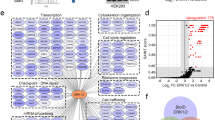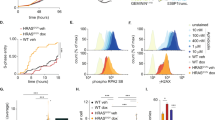Abstract
The incidence of malignant melanoma is growing rapidly worldwide and there is still no effective therapy for metastatic disease. This type of cancer is highly resistant to conventional DNA-damaging chemotherapeutics, and intense research has been dedicated for understanding the molecular pathways underlying chemoresistance. The Ras/mitogen-activated protein kinase (MAPK) signalling pathway is often deregulated in melanoma, which frequently harbours activating mutations in NRAS or BRAF. Herein, we demonstrate that the MAPK-activated protein kinase RSK (p90 ribosomal S6 kinase) contributes to melanoma chemoresistance by altering their response to chemotherapeutic agents. We find that RSK phosphorylates checkpoint kinase 1 (Chk1) at an inhibitory site, Ser280, both in vitro and in vivo. Our results indicate that RSK is the predominant protein kinase operating downstream of mitogens and oncogenes of the Ras/MAPK pathway, and consistent with this, we find that RSK constitutively phosphorylates Chk1 in melanoma. We show that RSK inhibition increases Chk1 activity in response to DNA-damaging agents, suggesting that the Ras/MAPK pathway modulates Chk1 function and the response to DNA damage. Accordingly, we demonstrate that RSK promotes G2 DNA damage checkpoint silencing in a Chk1-dependent manner, and find that RSK inhibitors sensitize melanoma cells to DNA-damaging agents. Together, our results identify a novel link between the Ras/MAPK pathway and the DNA damage response, and suggest that RSK inhibitors may be used to modulate chemosensitivity, which is one of the major obstacles to melanoma treatment.
This is a preview of subscription content, access via your institution
Access options
Subscribe to this journal
Receive 50 print issues and online access
$259.00 per year
only $5.18 per issue
Buy this article
- Purchase on Springer Link
- Instant access to full article PDF
Prices may be subject to local taxes which are calculated during checkout







Similar content being viewed by others
References
Meloche S, Pouyssegur J . The ERK1/2 mitogen-activated protein kinase pathway as a master regulator of the G1- to S-phase transition. Oncogene 2007; 26: 3227–3239.
Yoon S, Seger R . The extracellular signal-regulated kinase: multiple substrates regulate diverse cellular functions. Growth Fact 2006; 24: 21–44.
Rubinfeld H, Seger R . The ERK cascade: a prototype of MAPK signaling. Mol Biotechnol 2005; 31: 151–174.
Schubbert S, Shannon K, Bollag G . Hyperactive Ras in developmental disorders and cancer. Nat Rev Cancer 2007; 7: 295–308.
Michaloglou C, Vredeveld LC, Mooi WJ, Peeper DS . BRAF(E600) in benign and malignant human tumours. Oncogene 2008; 27: 877–895.
Dhomen N, Marais R . New insight into BRAF mutations in cancer. Curr Opin Genet Dev 2007; 17: 31–39.
Cargnello M, Roux PP . Activation and function of the MAPKs and their substrates, the MAPK-activated protein kinases. Microbiol Mol Biol Rev 2011; 75: 50–83.
Romeo Y, Zhang X, Roux PP . Regulation and function of the RSK family of protein kinases. Biochem J 2012; 441: 553–569.
Smith JA, Poteet-Smith CE, Xu Y, Errington TM, Hecht SM, Lannigan DA . Identification of the first specific inhibitor of p90 ribosomal S6 kinase (RSK) reveals an unexpected role for RSK in cancer cell proliferation. Cancer Res 2005; 65: 1027–1034.
Clark DE, Errington TM, Smith JA, Frierson HF, Weber MJ, Lannigan DA . The serine/threonine protein kinase, p90 ribosomal S6 kinase, is an important regulator of prostate cancer cell proliferation. Cancer Res 2005; 65: 3108–3116.
Cohen MS, Zhang C, Shokat KM, Taunton J . Structural bioinformatics-based design of selective, irreversible kinase inhibitors. Science 2005; 308: 1318–1321.
Romeo Y, Roux PP . Paving the way for targeting RSK in cancer. Expert Opin Ther Targets 2011; 15: 5–9.
Old WM, Shabb JB, Houel S, Wang H, Couts KL, Yen CY et al. Functional proteomics identifies targets of phosphorylation by B-Raf signaling in melanoma. Mol Cell 2009; 34: 115–131.
Miller AJ, Mihm MC . Melanoma. N Engl J Med 2006; 355: 51–65.
Eton O, Legha SS, Moon TE, Buzaid AC, Papadopoulos NE, Plager C et al. Prognostic factors for survival of patients treated systemically for disseminated melanoma. J Clin Oncol 1998; 16: 1103–1111.
Fecher LA, Amaravadi RK, Flaherty KT . The MAPK pathway in melanoma. Curr Opin Oncol 2008; 20: 183–189.
Davies H, Bignell GR, Cox C, Stephens P, Edkins S, Clegg S et al. Mutations of the BRAF gene in human cancer. Nature 2002; 417: 949–954.
Joseph EW, Pratilas CA, Poulikakos PI, Tadi M, Wang W, Taylor BS et al. The RAF inhibitor PLX4032 inhibits ERK signaling and tumor cell proliferation in a V600E BRAF-selective manner. Proc Natl Acad Sci USA 2010; 107: 14903–14908.
Solit DB, Garraway LA, Pratilas CA, Sawai A, Getz G, Basso A et al. BRAF mutation predicts sensitivity to MEK inhibition. Nature 2006; 439: 358–362.
Markovic SN, Erickson LA, Rao RD, Weenig RH, Pockaj BA, Bardia A et al. Malignant melanoma in the 21st century, part 2: staging, prognosis, and treatment. Mayo Clin Proc 2007; 82: 490–513.
Flaherty KT . Chemotherapy and targeted therapy combinations in advanced melanoma. Clin Cancer Res 2006; 12 (7 Pt 2): 2366s–2370s.
Gogas HJ, Kirkwood JM, Sondak VK . Chemotherapy for metastatic melanoma: time for a change? Cancer 2007; 109: 455–464.
Chapman PB, Hauschild A, Robert C, Haanen JB, Ascierto P, Larkin J et al. Improved survival with vemurafenib in melanoma with BRAF V600E mutation. N Engl J Med 2011; 364: 2507–2516.
Johannessen CM, Boehm JS, Kim SY, Thomas SR, Wardwell L, Johnson LA et al. COT drives resistance to RAF inhibition through MAP kinase pathway reactivation. Nature 2010; 468: 968–972.
Nazarian R, Shi H, Wang Q, Kong X, Koya RC, Lee H et al. Melanomas acquire resistance to B-RAF(V600E) inhibition by RTK or N-RAS upregulation. Nature 2010; 468: 973–977.
Koberle B, Tomicic MT, Usanova S, Kaina B . Cisplatin resistance: preclinical findings and clinical implications. Biochim Biophys Acta 2010; 1806: 172–182.
Galluzzi L, Senovilla L, Vitale I, Michels J, Martins I, Kepp O et al. Molecular mechanisms of cisplatin resistance. Oncogene 2012; 31: 1869–1883.
Walker M, Black EJ, Oehler V, Gillespie DA, Scott MT . Chk1 C-terminal regulatory phosphorylation mediates checkpoint activation by de-repression of Chk1 catalytic activity. Oncogene 2009; 28: 2314–2323.
Niida H, Katsuno Y, Banerjee B, Hande MP, Nakanishi M . Specific role of Chk1 phosphorylations in cell survival and checkpoint activation. Mol Cell Biol 2007; 27: 2572–2581.
Chen Y, Poon RY . The multiple checkpoint functions of CHK1 and CHK2 in maintenance of genome stability. Front Biosci 2008; 13: 5016–5029.
Shtivelman E, Sussman J, Stokoe D . A role for PI 3-kinase and PKB activity in the G2/M phase of the cell cycle. Curr Biol 2002; 12: 919–924.
Li P, Goto H, Kasahara K, Matsuyama M, Wang Z, Yatabe Y et al. P90 RSK arranges Chk1 in the nucleus for monitoring of genomic integrity during cell proliferation. Mol Biol Cell 2012; 23: 1582–1592.
Puc J, Keniry M, Li HS, Pandita TK, Choudhury AD, Memeo L et al. Lack of PTEN sequesters CHK1 and initiates genetic instability. Cancer Cell 2005; 7: 193–204.
King FW, Skeen J, Hay N, Shtivelman E . Inhibition of Chk1 by activated PKB/Akt. Cell Cycle 2004; 3: 634–637.
Sapkota GP, Cummings L, Newell FS, Armstrong C, Bain J, Frodin M et al. BI-D1870 is a specific inhibitor of the p90 RSK (ribosomal S6 kinase) isoforms in vitro and in vivo. Biochem J 2007; 401: 29–38.
Bain J, Plater L, Elliott M, Shpiro N, Hastie CJ, McLauchlan H et al. The selectivity of protein kinase inhibitors: a further update. Biochem J 2007; 408: 297–315.
Caron E, Ghosh S, Matsuoka Y, Ashton-Beaucage D, Therrien M, Lemieux S et al. A comprehensive map of the mTOR signaling network. Mol Syst Biol 2011; 6: 453.
Carriere A, Cargnello M, Julien LA, Gao H, Bonneil E, Thibault P et al. Oncogenic MAPK signaling stimulates mTORC1 activity by promoting RSK-mediated raptor phosphorylation. Curr Biol 2008; 18: 1269–1277.
Roux PP, Richards SA, Blenis J . Phosphorylation of p90 ribosomal S6 kinase (RSK) regulates extracellular signal-regulated kinase docking and RSK activity. Mol Cell Biol 2003; 23: 4796–4804.
Malumbres M, Barbacid MRAS . oncogenes: the first 30 years. Nat Rev Cancer 2003; 3: 459–465.
van de Weerdt BC, Medema RH . Polo-like kinases: a team in control of the division. Cell Cycle 2006; 5: 853–864.
Mamely I, van Vugt MA, Smits VA, Semple JI, Lemmens B, Perrakis A et al. Polo-like kinase-1 controls proteasome-dependent degradation of Claspin during checkpoint recovery. Curr Biol 2006; 16: 1950–1955.
Peschiaroli A, Dorrello NV, Guardavaccaro D, Venere M, Halazonetis T, Sherman NE et al. SCFbetaTrCP-mediated degradation of Claspin regulates recovery from the DNA replication checkpoint response. Mol Cell 2006; 23: 319–329.
Liu XS, Song B, Liu X . The substrates of Plk1, beyond the functions in mitosis. Protein Cell 2010; 1: 999–1010.
Gray-Schopfer V, Wellbrock C, Marais R . Melanoma biology and new targeted therapy. Nature 2007; 445: 851–857.
Soengas MS, Lowe SW . Apoptosis and melanoma chemoresistance. Oncogene 2003; 22: 3138–3151.
Roux PP, Ballif BA, Anjum R, Gygi SP, Blenis J . Tumor-promoting phorbol esters and activated Ras inactivate the tuberous sclerosis tumor suppressor complex via p90 ribosomal S6 kinase. Proc Natl Acad Sci USA 2004; 101: 13489–13494.
Roux PP, Shahbazian D, Vu H, Holz MK, Cohen MS, Taunton J et al. RAS/ERK signaling promotes site-specific ribosomal protein S6 phosphorylation via RSK and stimulates cap-dependent translation. J Biol Chem 2007; 282: 14056–14064.
Julien LA, Carriere A, Moreau J, Roux PP . mTORC1-activated S6K1 phosphorylates Rictor on threonine 1135 and regulates mTORC2 signalling. Mol Cell Biol 2010; 30: 908–921.
Acknowledgements
We thank all the members of our laboratory for their insightful discussions and comments on the manuscript and the data. This work was supported by grants from the Canadian Cancer Society Research Institute (700878) and the Cancer Research Society (DF121153) PP Roux holds a Canada Research Chair in Signal Transduction and Proteomics. JA Galan holds a postdoctoral fellowship from the Canadian Institutes of Health Research (CIHR). IRIC core facilities are supported by the FRSQ.
Author information
Authors and Affiliations
Corresponding author
Ethics declarations
Competing interests
The authors declare no conflict of interest.
Additional information
Supplementary Information accompanies the paper on the Oncogene website
Rights and permissions
About this article
Cite this article
Ray-David, H., Romeo, Y., Lavoie, G. et al. RSK promotes G2 DNA damage checkpoint silencing and participates in melanoma chemoresistance. Oncogene 32, 4480–4489 (2013). https://doi.org/10.1038/onc.2012.472
Received:
Revised:
Accepted:
Published:
Issue Date:
DOI: https://doi.org/10.1038/onc.2012.472
Keywords
This article is cited by
-
Inhibition of p90 ribosomal S6 kinases disrupts melanoma cell growth and immune evasion
Journal of Experimental & Clinical Cancer Research (2023)
-
The Role of p90 Ribosomal S6 Kinase (RSK) in Tyrosine Kinase Inhibitor (TKI)-Induced Cardiotoxicity
Journal of Cardiovascular Translational Research (2023)
-
Synergistic cytotoxicity of the CDK4 inhibitor Fascaplysin in combination with EGFR inhibitor Afatinib against Non-small Cell Lung Cancer
Investigational New Drugs (2022)
-
G-quadruplexes: a promising target for cancer therapy
Molecular Cancer (2021)
-
miR-634 restores drug sensitivity in resistant ovarian cancer cells by targeting the Ras-MAPK pathway
Molecular Cancer (2015)



